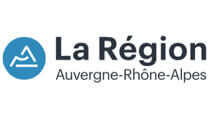Understanding and mastering the keys to success when conducting fixed asset inventories is essential. In the article below, we provide some food for thought that should lead to successful fixed asset inventory projects. In our experience the 3 keys to successful fixed asset inventories are always the same. We detail them below and explain why they are important.
1. Context of a fixed asset inventory project
A fixed asset inventory project can be complex to set up in terms of organization, methodology and the involvement of internal company staff.
Of course, each fixed asset census project has specific objectives and constraints that differ from one company to another.
Without this list being exhaustive, here are the main factors that differentiate

Medici Generici servizio di assistenza medica a domicilio Roma
Il nostro team fornisce un servizio di assistenza sanitaria domiciliare, garantendo professionalità e comfort per i pazienti a Roma.- Company’s activity ; the inventories of fixed assets carried out in the industrial environment (agrifood, chemicals/pharmaceuticals, automotive, etc.), tertiary sector (headquarters, administrations, local authorities, etc.), research & development, are all different because they impose specific constraints on the sector of activity
- Size of the site to be inventoried; Obviously, the larger the sites, the longer the capital inventory project will take and will require even more careful preparation.
The longer the company’s internal teams are involved, the greater the disruption caused by the fixed asset inventory project. - Scope of the fixed asset inventory project; the asset inventory project will be more or less complex depending on the nature of the assets to be inventoried.
Industrial equipment & tools, handling, fixtures, fittings, works, computer equipment, furniture: each category of fixed assets corresponds to a specific treatment in terms of tagging (or not) and rules for reconciliation with the company’s accounting bases.
In any case and regardless of the complexity of the fixed asset inventory project, we have identified the 3 keys that constitute the common base of any project and condition its success.
- Definition of objectives
- The definition of the scope
- Measurement of project performance
2. Define the objectives of the fixed assets inventory project
Even if the need to define the objectives of a fixed asset inventory project is self-evident, it seems relevant to us to insist on the care that should be taken in the genesis of the project.
- Most of the time, in our experience, the first objective for carrying out an inventory of fixed assets is compliance with standards & regulations (national, European, international) but also with the requests of internal and external auditors (commissioners to accounts)
For this the inventory of fixed assets is the obligatory passage and by inventory of fixed assets it is necessary to understand not only the inventory of the assets but also and especially the reliability of the accounting bases of the company. - To this 1st objective can be added other objectives, such as the monitoring of fixed assets over time, the inventory of physical assets belonging to third parties, the correspondence between the accounting bases and the CMMS (computer-assisted maintenance management ) or other data sources within the company, insurance values, etc
- Whatever they are, the objectives of a fixed asset inventory project must take into account the organizational capacities of the company to carry them out, particularly in terms of the availability and skills of the internal teams
AVOID: Modify the objectives of the fixed asset inventory project during the course of the project and as the wishes are expressed by the various project stakeholders
It is necessary, from the start, to define clear and easy-to-implement objectives
3. Define the scope of the fixed asset inventory project
Once the objectives of the fixed asset inventory project have been clearly defined and understood by all the actors involved in the project, it is necessary to define the perimeters of the project:
- Accounting scope
What categories of fixed assets will need to be addressed as part of the fixed asset inventory project?
Here are some categories of fixed assets that are usually part of the scope of an inventory project: industrial equipment & tools, tangible fixed assets (fittings, fittings, works, installations), computer equipment, buildings, furniture
Certain other categories are very often excluded from the scope of the fixed asset inventory project, such as intangible fixed assets (trademarks, patents, software, goodwill)
Finally, should the inventory only concern fixed assets or can/should it extend to other types of assets within the company? For example, property owned by the company but not capitalized or rental property or property belonging to third parties - Geographical scope
It is important to define from the outset the sites/buildings/areas that will be included in the scope of the fixed asset inventory project.
Is it a single-site project or on the contrary, the project will concern all the locations of the group/entity.
Finally, should the inventory project be extended to third-party sites housing property belonging to the company?
Here too, it is preferable to stick to the scope initially defined to prevent the project from becoming too complicated to manage and from overflowing the deadlines initially planned - Legal scope
Should the fixed assets inventory project include assets owned by third parties (rental, leasing, leasing, customers, state-owned)
AVOID: Changing the scope of the asset inventory project in progress
This may create confusion, extend the project dead line and undermine the economic performance of the asset mapping project
4. Measuring the performance of the asset inventory project.
Have the objectives of the fixed asset inventory project been met?
Has the fixed asset accounting base become more reliable and does it reflect the physical reality of the company’s assets?
Once the asset inventory is complete, the economic performance of the project must be measured.
To do this, it is imperative to create performance indicators (KPIs) that are simple to set up and relevant
For example, a KPI on disposals allows you to measure the net book value (nbv) of the fixed assets to be removed from the accounting bases in relation to the nbv of the fixed asset inventory project scope; this indicator (expressed as a %) will highlight the performance of the daily physical fixed asset monitoring.
If this rate is higher than a threshold defined at the outset (e.g. 5%), this could mean that the management of fixed assets is not optimised. Corrective action should then be taken
AVOID: creating too many KPIs, which will blur the visibility of the asset inventory project or, on the contrary, creating none and letting the project drift without any control
5. Conclusion
Whether a fixed asset inventory project is carried out internally or outsourced, the rules for implementation are identical.
If the project leaders are not aware of the crucial importance of these three keys to success, the fixed asset inventory project will be poorly executed.
The results will be unsatisfactory for the company and it will be difficult for the company to re-engage its teams for future projects.
Fixed asset management, the key to the reliability of the assets on the company’s balance sheet, will fail.






